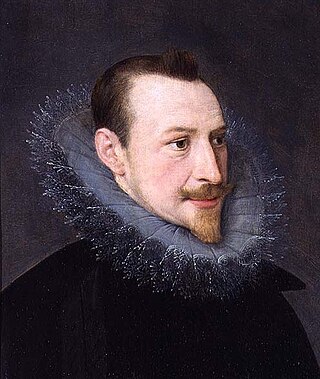
Edmund Spenser was an English poet best known for The Faerie Queene, an epic poem and fantastical allegory celebrating the Tudor dynasty and Elizabeth I. He is recognized as one of the premier craftsmen of nascent Modern English verse, and he is considered one of the great poets in the English language.

The Faerie Queene is an English epic poem by Edmund Spenser. Books I–III were first published in 1590, then republished in 1596 together with books IV–VI. The Faerie Queene is notable for its form: at over 36,000 lines and over 4,000 stanzas, it is one of the longest poems in the English language; it is also the work in which Spenser invented the verse form known as the Spenserian stanza. On a literal level, the poem follows several knights as a means to examine different virtues, and though the text is primarily an allegorical work, it can be read on several levels of allegory, including as praise of Queen Elizabeth I. In Spenser's "Letter of the Authors", he states that the entire epic poem is "cloudily enwrapped in Allegorical devices", and that the aim of publishing The Faerie Queene was to "fashion a gentleman or noble person in virtuous and gentle discipline".

Sir Philip Sidney was an English poet, courtier, scholar and soldier who is remembered as one of the most prominent figures of the Elizabethan age. His works include a sonnet sequence, Astrophel and Stella, a treatise, The Defence of Poesy and a pastoral romance, The Countess of Pembroke's Arcadia.
Richard Barnfield was an English poet. His obscure though close relationship with William Shakespeare has long made him interesting to scholars. It has been suggested that he was the "rival poet" mentioned in Shakespeare's sonnets.
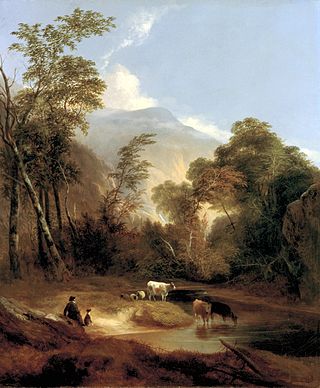
The pastoral genre of literature, art, or music depicts an idealised form of the shepherd's lifestyle – herding livestock around open areas of land according to the seasons and the changing availability of water and pasture. The target audience is typically an urban one. A pastoral is a work of this genre. A piece of music in the genre is usually referred to as a pastorale.
An eclogue is a poem in a classical style on a pastoral subject. Poems in the genre are sometimes also called bucolics. The term is also used for a musical genre thought of as evoking a pastoral scene.
Abraham Fraunce was an English poet.
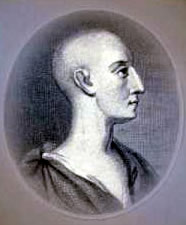
Ambrose Philips was an English poet and politician. He feuded with other poets of his time, resulting in Henry Carey bestowing the nickname "Namby-Pamby" upon him, which came to mean affected, weak, and maudlin speech or verse.
Rosalind or Rosalinde may refer to:

Mary Herbert, Countess of Pembroke was among the first Englishwomen to gain notice for her poetry and her literary patronage. By the age of 39, she was listed with her brother Philip Sidney and with Edmund Spenser and William Shakespeare among the notable authors of the day in John Bodenham's verse miscellany Belvidere. Her play Antonius is widely seen as reviving interest in soliloquy based on classical models and as a likely source of Samuel Daniel's closet drama Cleopatra (1594) and of Shakespeare's Antony and Cleopatra (1607). She was also known for translating Petrarch's "Triumph of Death", for the poetry anthology Triumphs, and above all for a lyrical, metrical translation of the Psalms.
A recusatio is a poem in which the poet says he is supposedly unable or disinclined to write the type of poem which he originally intended to, and instead writes in a different style.
The Piers Plowman tradition is made up of about 14 different poetic and prose works from about the time of John Ball and the Peasants Revolt of 1381 through the reign of Elizabeth I and beyond. All the works feature one or more characters, typically Piers, from William Langland's poem Piers Plowman. Because the Plowman appears in the General Prologue to The Canterbury Tales by Geoffrey Chaucer but does not have his own tale, plowman tales are sometimes used as additions to The Canterbury Tales, or otherwise conflated or associated with Chaucer.
The Areopagus is a proposed 16th-century society or club dedicated to the reformation of English poetry. The club may have involved figures such as Edmund Spenser, Gabriel Harvey, Edward Dyer and Sir Phillip Sidney. The existence of the Areopagus as a formal society was first noted by Henry Richard Fox Bourne in 1862 in his Memoir of Sir Philip Sidney. There is no direct evidence that the group was more than an idea found in the correspondence between Spenser and Harvey, and if it existed its membership is uncertain.
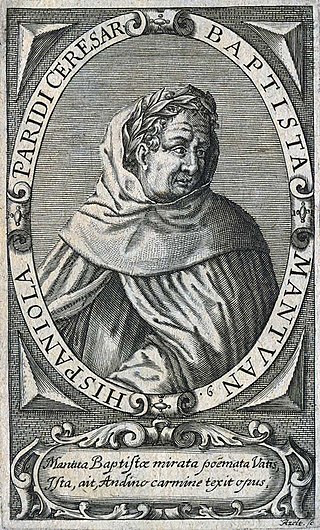
Baptista Spagnuoli Mantuanus, O.Carm was an Italian Carmelite reformer, humanist, and poet.
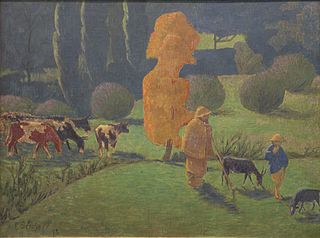
Corydon is a stock name for a herdsman in ancient Greek pastoral poems and fables, and in much later European literature.

A shepherd or sheepherder is a person who tends, herds, feeds, or guards flocks of sheep. Shepherd derives from Old English sceaphierde. Shepherding is one of the world's oldest occupations, it exists in all parts of the globe, and it is an important part of pastoralist animal husbandry.

Colin Clouts Come Home Againe is a pastoral poem by the English poet Edmund Spenser and published in 1595. It has been the focus of little critical attention in comparison with the poet's other works such as The Faerie Queene, yet it has been called the "greatest pastoral eclogue in the English language". In a tradition going back to Petrarch, the pastoral eclogue contains a dialogue between shepherds with a narrative or song as an inset, and which also can conceal allegories of a political or ecclesiastical nature.
Theodore Bathurst, also known as Theophilus Bathurst was an English poet and translator who wrote in the Latin language. His most notable work is Calendarium Pastorale.
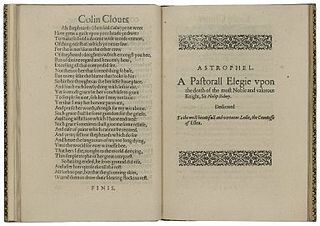
Astrophel: A Pastorall Elegy upon the Death of the Most Noble and Valorous Knight, Sir Philip Sidney is a poem by the English poet Edmund Spenser. It is Spenser's tribute to the memory of Sir Philip Sidney, who had died in 1586, and was dedicated "To the most beautiful and vertuous Ladie, the Countesse of Essex", Frances Walsingham, Sidney's widow.












